Looking for things to do in Le Marche? Jane Keightley talks us through her top 10 Le Marche attractions…
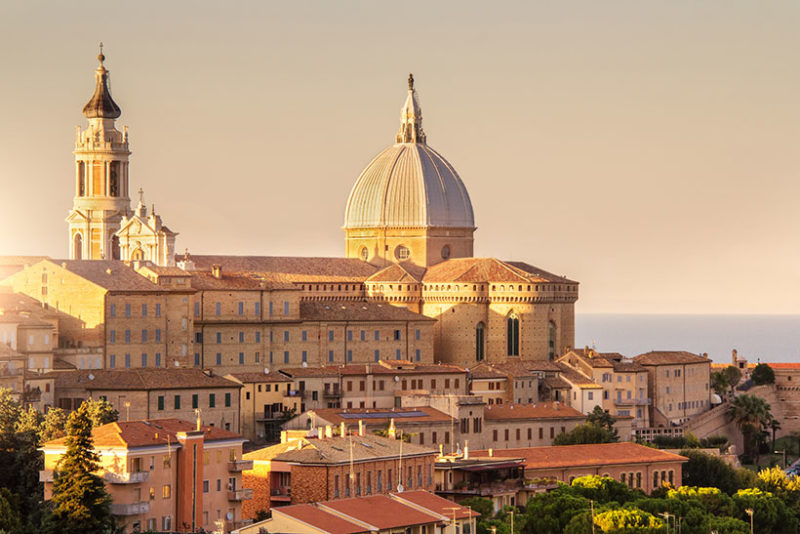
Although not as popular with tourists as neighbouring Tuscany and Umbria, Le Marche is blessed with beautiful hill towns as far as the eye can see.
With the soaring peaks of the Sibillini Mountains on one side and the beaches of the Conero and Palm Riviera on the other, it also has two historic cities which are a must to visit: the ducal city of Urbino and beautiful Ascoli Piceno down in the south of the region.
Ancona, its capital, is a port city on the Riviera del Conero, an area full of sandy coves, limestone cliffs and medieval villages; and Pesaro, another coastal town, is the birthplace of the opera composer Gioachino Rossini.
The area is not bursting with tourists – and that is a large part of its charm. Read on to find out why Le Marche is the perfect region for a peaceful getaway.
Here are the top 10 things to do in Le Marche:
1. Explore the ducal city of Urbino
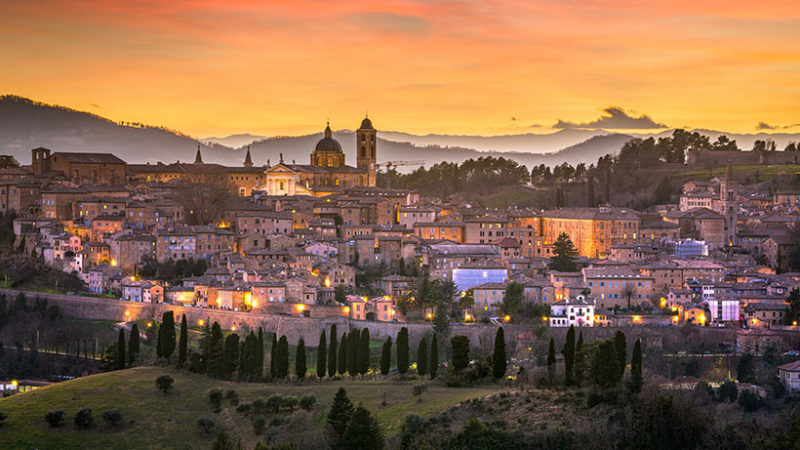
Urbino is one of Italy’s most perfect Renaissance towns and the huge Palazzo Ducale dominates the surrounding landscape.
As you walk around the town it’s as if you have stepped back in time as the historical centre has changed little since the 16th century. It has also been a centre for learning and culture since 1507 and today students outnumber other inhabitants of the town.
A tour around the Palazzo is a must and includes the National Gallery of Le Marche, where you can see paintings by Piero della Francesca, Bellini and Raphael.
2. Wander around the Frasassi Caves
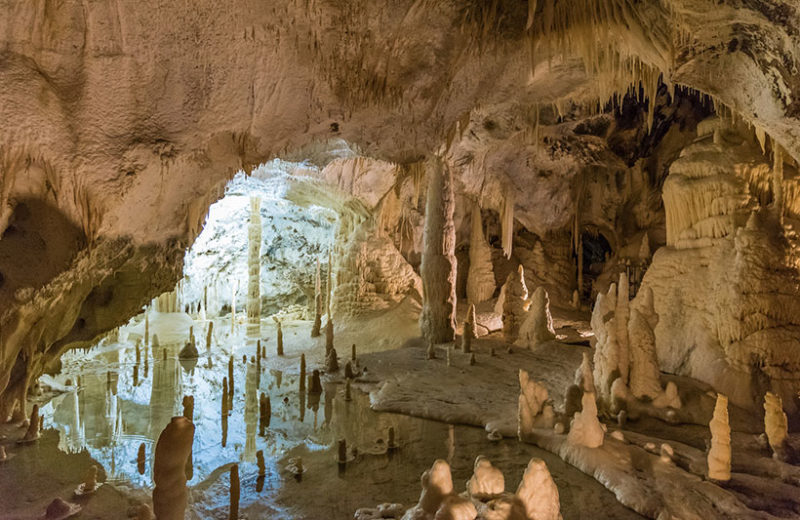
The Grotte Di Frasassi are some of the most spectacular caves in the world. Only discovered in 1971, they are actually 1,400,000 years old.
It was a combination of sulphur and water which eroded the rock to create the cave system and the water here is rich in minerals, which creates stalagmites and stalactites that grow at a rate of one or two millimetres a year.
The most spectacular part of the cave complex is the huge Grotta Grande del Vento, which is 200 metres high, 165 metres long and 110 metres wide.
Thirty kilometres of the caves have been explored so far and a walkway has been constructed through five of its caverns.
3. The Joust of the Quintana
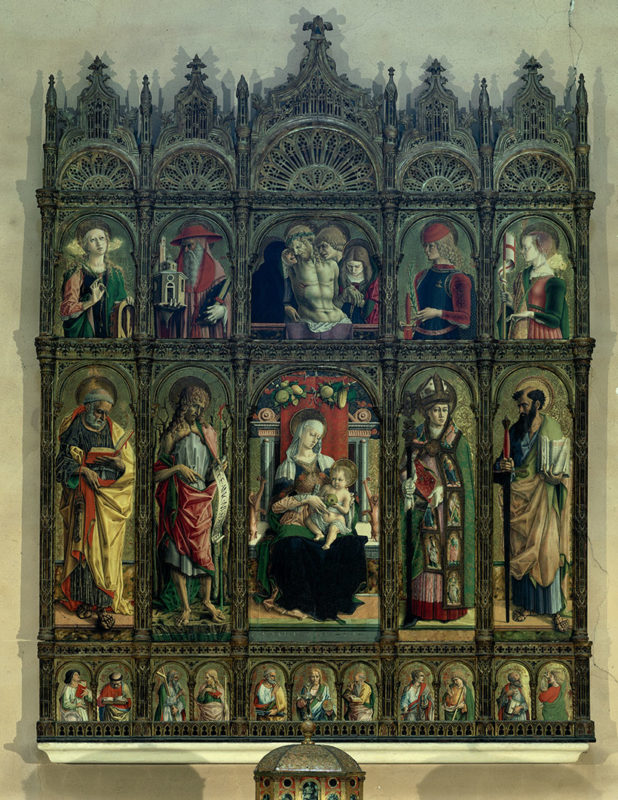
Twice a year, in July and August, the people of Ascoli Piceno dress up in medieval costumes inspired by the ones in Carlo Crivelli’s polyptych in the cathedral to celebrate the Joust of the Quintana.
The rules, set down in 1378, state that one knight from each of the city’s six districts competes by riding around the field in a figure of eight before trying to hit the centre of the shield of a puppet called the Moro with a lance.
Each knight gets three turns and is judged for speed and accuracy. Before the Joust begins there are many processions around the town with the obligatory flag wavers and drummers.
4. Discover the tiled piazza of Ascoli Piceno
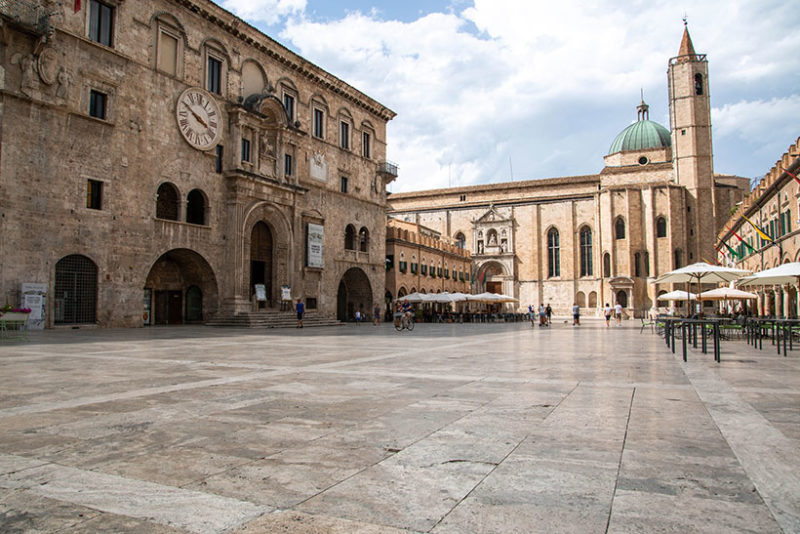
Italy is famous for its amazing squares and piazzas but the Piazza del Popolo in Ascoli Piceno literally does take your breath away when you walk into it.
The travertine tiles that the Piazza is tiled with positively gleam and it is full of stylish shops and cafés. It is the ideal spot for people watching, and what better place to do this than at the art deco Caffè Meletti, founded in 1907 and famous for its Anisetta liqueur.
In Ascoli Piceno there are three important buildings to look out for which represent the three powers of the time: political with the Captain’s Palace, religious with the Church of San Francesco and commercial with the Merchants’ Lodge.
If you can tear yourself away from this beautiful piazza the rest of Ascoli is well worth exploring too.
5. Meander around the streets of hill towns…
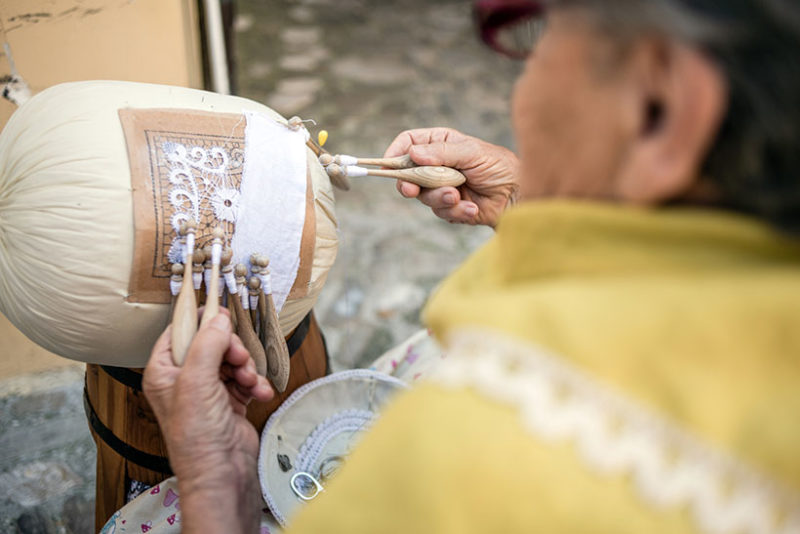
When it comes to picturesque hill towns Le Marche certainly has a wonderful selection.
One of the most interesting is Offida, which is famous for its lace making. As you approach the entrance to the old part of the town there is abronze monuments which shows three generations of lace makers.
Then as you walk along the main street you pass real life lace makers in their doorways busy working on their small wooden bobbins.
Reaching the main Piazza, which is triangular, you can admire the Palazzo Comunale, one of the most beautiful town halls in Le Marche. Before you leave, visit the Lace Museum, where one of the exhibits is a lace dress made for Naomi Campbell to wear at a fashion show in London.
Another interesting hill town is Ripatransone, which is known as the Balcony of Piceno as you can gaze out towards the Adriatic and inland towards the mountains.
Its centro storico boasts buildings dating back to the Middle Ages, Renaissance and Baroque times, but is best known for having “the narrowest street in Italy”.
At 43 centimetres wide, it’s just an alley really, but it attracts visitors who enjoy posing for a photograph squeezed tightly between its walls.
6. Enjoy the peace of the Parco del Conero
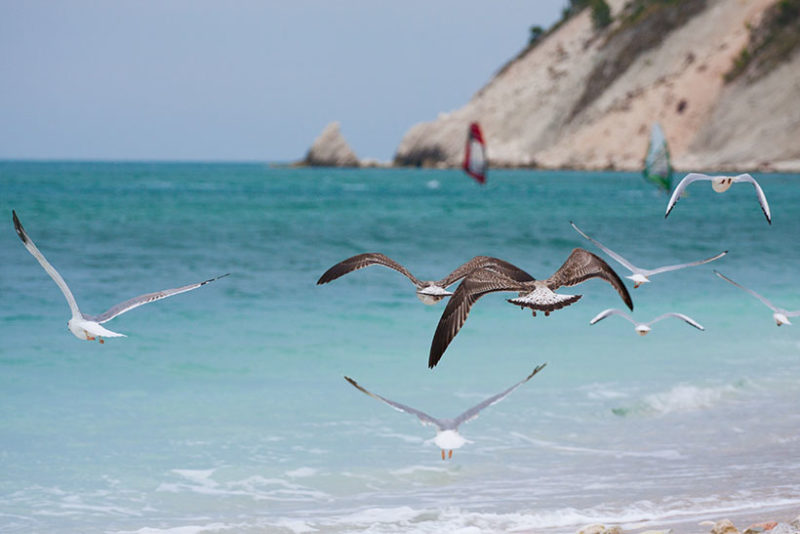
Not far from the bustling streets of Ancona you can find the Parco del Conero, a peaceful area where the hills meet the sea.
It’s a perfect place for walking, bird watching and just enjoying the beautiful beaches.
The main towns are Portonovo, Sirolo and Numana, where there is a great selection of seafood on offer.
If you are feeling energetic you can hire bikes and boats or go windsurfing.
7. Sample local delicacies…

In April every year the centro storico of Ascoli hosts the Fritto Misto all’Italiana, a huge celebration of fried food.
Delicacies on offer are stuffed olives, Sicilian cartocci, and Puglian panzerotti, all washed down with craft beers and local wines.
Ascoli’s own fried speciality is olive ascolane ripiene (aka olive all’ascolana) – olives stuffed with meat and surrounded by a crisp breaded crust.
These are often eaten as snacks to nibble on while waiting for your main meal.
8 Enjoy sensational scenery…
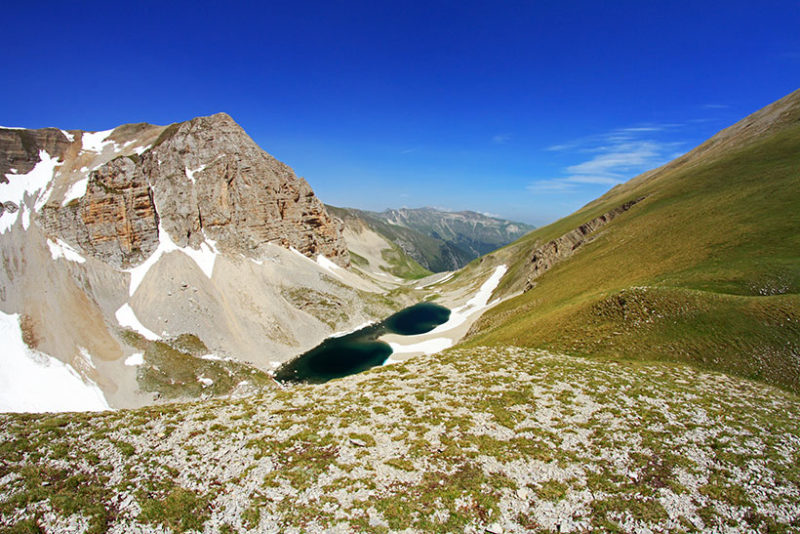
One of the highest parts of the Apennines, the Monti Sibillini National Park is home to boar, wolves and bears – and tales of witchcraft and sorcery abound.
Indeed, the Lago di Pilato (the Lake of Pontius Pilate) is said to contain his body. It is said that he drowned here.
There is a rare freshwater crayfish here which occasionally turns the water red, adding to the mythology of the lake.
In the area around Castelluccio (in the park, but over the border in Umbria), the mountains are covered with wild flowers in late May and there are 50 types of wild orchid.
9. Laze around on the Palm Riviera
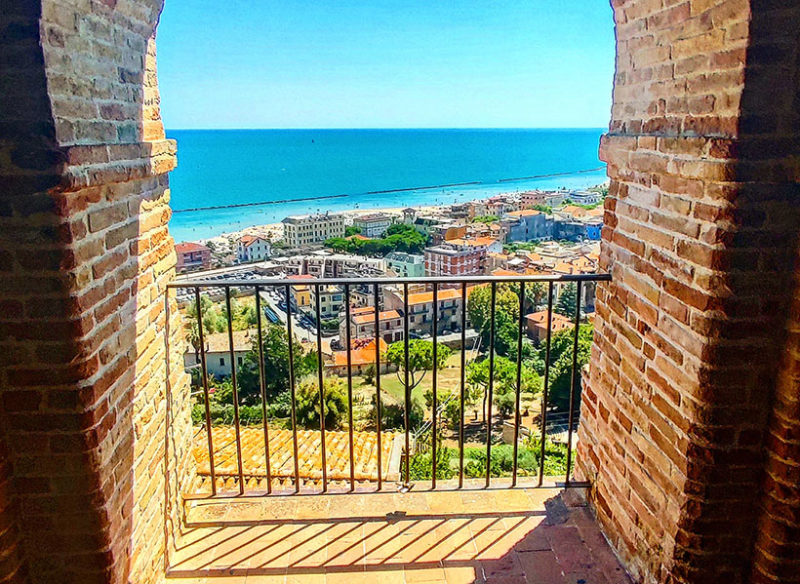
The Adriatic Coast in southern Le Marche is aptly named the Riviera delle Palme after its thousands of palm trees.
One of its most interesting resorts is Grottammare, a surprisingly arty place.
Known as the Pearl of the Adriatic, it was beloved of Franz Liszt and now every August the Festival Liszt brings together pianists from all over the world.
The town is split in two, with Grottammare Alta, the medieval town, overlooking the smart beach resort of Grottammare Bassa. The old town is included in the list of Borghi più belli d’Italia (Italy’s most beautiful villages).
Along the waterfront you can enjoy a selection of gardens, Liberty villas and sculptures, including the bronze Metamorfosi with JFK’s profile by Pericle Fazzini. You can also visit the Museo dell’Illustrazione Comica, where they have a collection of 300 humorous and satirical posters and original cartoons.
10. Make a pilgrimage to Loreto
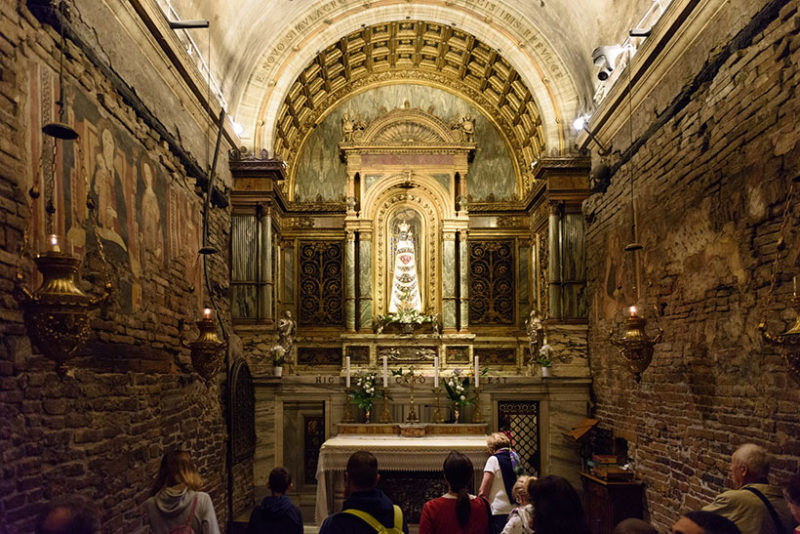
On a hill top south of Ancona, Loreto is dominated by the domed Basilica della Santa Casa. This majestic building is one of Italy’s most celebrated pilgrimage sites.
Inside is the Santa Casa di Loreto, a tiny brick house which is said to be where the Virgin Mary grew up.
According to legend, a host of angels brought the house from Nazareth in 1294 after the Crusaders were expelled from Palestine.
Interestingly, in more modern times archaeologists have studied it and have found that the materials in the Santa Casa are the same as in the Grotto of the Annunciation in Nazareth.
Get more holiday inspiration in our Italian travel archives
Words by Jane Keightley
Featured photo © Natalia SERDYUK via Getty Images
